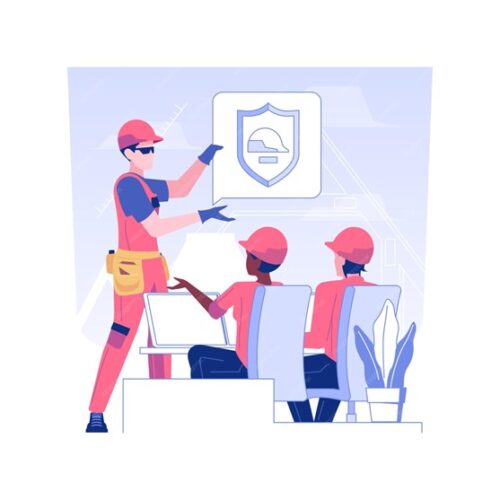In today’s competitive business landscape, continuous growth and efficiency are essential for the success of any company. One of the most effective ways to achieve these goals is through corporate onsite training. Corporate onsite training refers to the practice of bringing training programs and workshops directly to the company’s premises, allowing employees to enhance their skills and knowledge without the need to leave the workplace.
The importance of corporate onsite training cannot be overstated. It provides employees with the opportunity to learn and develop new skills in a familiar environment, which can lead to increased productivity and job satisfaction. Additionally, onsite training allows companies to tailor the programs to meet their specific needs and objectives. This targeted approach ensures that employees receive training that is directly relevant to their roles and responsibilities, maximizing the impact of the training and enabling employees to apply what they have learned immediately.
Another significant advantage of corporate onsite training is the cost-effectiveness it offers. By conducting training programs in-house, companies can save on expenses associated with external training providers, such as travel costs and accommodation. Moreover, onsite training eliminates the need for employees to take time away from work, minimizing any disruption to daily operations. This cost and time efficiency make corporate onsite training an attractive option for companies of all sizes.
Benefits of Corporate Onsite Training
Corporate onsite training brings a multitude of benefits to both employees and the company as a whole. Firstly, it fosters a culture of continuous learning within the organization. When employees have access to training opportunities on-site, they are more likely to engage in professional development, leading to a skilled and adaptable workforce. This, in turn, enables the company to stay ahead of industry trends and developments, driving growth and innovation.
Furthermore, onsite training programs can be customized to address specific skill gaps or areas of improvement within the company. Whether it’s enhancing leadership skills, improving communication, or mastering new technologies, corporate onsite training can be tailored to meet the unique needs of each department or team. This targeted approach ensures that employees receive the training that directly aligns with their roles and responsibilities, leading to improved job performance and increased efficiency.
Another advantage of corporate onsite training is the opportunity for team building and collaboration. When employees attend training together, they have the chance to interact with colleagues from different departments and backgrounds, fostering a sense of camaraderie and collaboration. This can enhance communication and teamwork within the company, creating a more harmonious and productive work environment.
Different Types of Corporate Onsite Training Programs
There are various types of corporate onsite training programs that companies can choose from based on their specific needs and objectives. Let’s explore some of the most common options:
- Technical Training: This type of training focuses on enhancing technical skills required for specific job roles. It can include workshops on software proficiency, operating machinery, or using specialized equipment.
- Leadership Development: Leadership training programs aim to develop and enhance the leadership skills of employees at different levels within the organization. These programs cover topics such as effective communication, decision-making, team management, and strategic thinking.
- Sales and Customer Service Training: Companies that rely on sales and customer service teams can benefit from onsite training programs that focus on improving these skills. These programs may include modules on effective sales techniques, customer relationship management, and conflict resolution.
- Compliance Training: Compliance training ensures that employees are aware of and adhere to the legal and regulatory requirements specific to their industry. These programs cover topics such as workplace health and safety, data protection, and ethical practices.
- Soft Skills Development: Soft skills, such as communication, teamwork, and problem-solving, are crucial for success in the modern workplace. Onsite training programs can help employees develop these skills, enabling them to work more effectively with colleagues and clients.
How to Design an Effective Corporate Onsite Training Program
Designing an effective corporate onsite training program requires careful planning and consideration. Here are some key steps to follow:
- Identify Training Needs: Conduct a thorough analysis of the company’s objectives and the skills required to achieve them. Identify the specific areas where training is needed and the desired outcomes.
- Set Clear Objectives: Clearly define the objectives of the training program. What skills or knowledge should employees gain? How will this contribute to the company’s growth and efficiency?
- Tailor the Content: Customize the training content to meet the specific needs of the company and its employees. Ensure that the material is relevant, engaging, and practical.
- Choose the Right Trainers: Select trainers who have expertise in the subject matter and experience in delivering effective onsite training. Trainers should be able to engage participants, facilitate discussions, and provide real-world examples.
- Implement Interactive Methods: Incorporate interactive elements into the training program, such as group activities, case studies, and simulations. This promotes active learning and allows participants to apply their newly acquired knowledge.
- Provide Ongoing Support: Offer post-training support to employees, such as access to resources, online forums, or mentoring programs. This ensures that the learning is reinforced and employees have the opportunity to seek clarification or further guidance.
By following these steps, companies can design and implement effective corporate onsite training programs that maximize growth and efficiency.
The Role of Trainers in Corporate Onsite Training
Trainers play a crucial role in the success of corporate onsite training programs. They are responsible for facilitating learning, engaging participants, and ensuring that the training objectives are met. Here are some key responsibilities of trainers in corporate onsite training:
- Designing Training Materials: Trainers are responsible for developing training materials that are relevant, engaging, and aligned with the company’s objectives. This includes creating presentations, handouts, and interactive activities that support the learning process.
- Delivering Engaging Sessions: Trainers must have excellent presentation and facilitation skills to keep participants engaged and motivated throughout the training sessions. They should create a positive and inclusive learning environment where participants feel comfortable asking questions and sharing their experiences.
- Adapting to Participants’ Needs: Trainers should be flexible and adaptable to meet the diverse needs of participants. They should recognize different learning styles and adjust their delivery methods accordingly. This includes providing additional support or clarification when needed.
- Encouraging Active Participation: Trainers should encourage active participation and interaction among participants. This can be achieved through group activities, discussions, and role-plays that allow participants to apply their learning in a practical context.
- Providing Feedback and Assessment: Trainers should provide constructive feedback and assessment to participants to help them gauge their progress and identify areas for improvement. This feedback should be tailored to individual participants’ needs and delivered in a supportive manner.
By fulfilling these responsibilities, trainers can create a positive and impactful learning experience for participants, leading to improved skills and increased efficiency within the company.
Measuring the Success of Corporate Onsite Training
To ensure the effectiveness of corporate onsite training programs, it’s essential to measure their impact and success. Here are some key metrics and methods for evaluating the effectiveness of corporate onsite training:
- Pre- and Post-Training Assessments: Conduct assessments before and after the training program to measure the improvement in participants’ knowledge and skills. This can be done through quizzes, tests, or practical demonstrations.
- Participant Feedback: Collect feedback from participants to understand their perception of the training program. This feedback can be obtained through surveys or structured interviews. It provides valuable insights into the relevance, engagement, and effectiveness of the training.
- On-the-Job Performance: Monitor participants’ performance on the job after the training to assess the application of new skills and knowledge. This can be done through performance evaluations, productivity metrics, or feedback from supervisors.
- Return on Investment (ROI): Evaluate the financial impact of the training program by comparing the costs incurred with the benefits gained. This can include factors such as increased productivity, improved customer satisfaction, or reduced error rates.
- Long-Term Impact: Assess the long-term impact of the training program by tracking participants’ career progression, retention rates, or contributions to the company’s growth. This provides insights into the lasting effects of the training on individuals and the organization.
By using these measurement methods, companies can ensure that their corporate onsite training programs are effective, relevant, and contribute to the growth and efficiency of the company.
How to Budget for Corporate Onsite Training
Budgeting for corporate onsite training is an essential aspect of planning and implementing effective training programs. Here are some key considerations when budgeting for corporate onsite training:
- Identify Training Needs: Determine the specific training needs of the company and prioritize them based on their impact on growth and efficiency. This will help allocate the budget effectively.
- Evaluate Internal Resources: Assess the internal resources available for training, such as in-house trainers or existing training materials. Leveraging internal resources can help reduce external training costs.
- Research External Training Providers: If external training providers are required, research and compare different providers to find the most cost-effective options. Consider factors such as reputation, expertise, and pricing.
- Consider Travel and Accommodation Costs: If employees or trainers need to travel to deliver or attend training, factor in travel and accommodation expenses. Explore options for cost-saving, such as group bookings or utilizing technology for virtual training sessions.
- Allocate Training Time: Consider the impact of employees’ time away from work for training. Determine the optimal balance between training duration and minimizing disruption to daily operations.
- Track and Evaluate Costs: Keep track of all training-related expenses and evaluate their effectiveness. This will help refine future training budgets and ensure that resources are allocated efficiently.
By carefully budgeting for corporate onsite training, companies can maximize the return on investment and ensure that training programs are aligned with their growth and efficiency goals.
WHS and Training Compliance Solutions Offering Various Onsite Training Programs
When it comes to corporate onsite training, partnering with a reputable training provider is crucial for ensuring high-quality programs and impactful learning experiences. WHS and Training Compliance Solutions is a leading provider of onsite training programs, offering a wide range of options to meet the diverse needs of companies across different industries.
With a team of experienced trainers and a comprehensive catalog of training courses, WHS and Training Compliance Solutions can design and deliver customized training programs tailored to the specific requirements of each company. Whether it’s technical training, leadership development, compliance training, or soft skills enhancement, they have the expertise to deliver engaging and effective onsite training programs.
Furthermore, WHS and Training Compliance Solutions prioritize the success of their clients’ training programs. They work closely with companies to understand their objectives, design relevant training materials, and deliver interactive sessions that promote active learning and skill development. Their commitment to excellence and customer satisfaction sets them apart as a trusted partner for corporate onsite training.
So, if you are looking to take your company to the next level through corporate onsite training, contact WHS and Training Compliance Solutions. Their expertise, professionalism, and dedication to delivering high-quality training programs will ensure that your company maximizes growth and efficiency.
Conclusion: Taking Your Company to the Next Level with Corporate Onsite Training
Corporate onsite training is a powerful tool for companies to maximize their growth and efficiency. By bringing training programs directly to the workplace, companies can provide employees with targeted and relevant learning experiences, leading to increased productivity, improved job satisfaction, and enhanced skills.
The benefits of corporate onsite training are numerous, including cost-effectiveness, customization, and team building opportunities. By designing effective training programs, choosing the right trainers, and measuring the success of the training, companies can ensure that their investment in corporate onsite training is well worth it.
When it comes to choosing a training provider, WHS and Training Compliance Solutions stand out as a trusted partner. Their expertise, comprehensive catalog of training programs, and commitment to customer satisfaction make them the ideal choice for companies looking to take their training programs to the next level.
So, take the next step in maximizing your company’s growth and efficiency. Contact WHS and Training Compliance Solutions for your next training program, and unlock the potential within your workforce.












